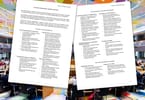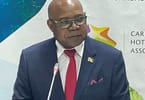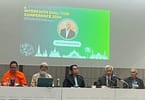WASHINGTON — The head of the Federal Aviation Administration said Wednesday that tighter government regulations and tougher industry self-policing are needed to improve commuter airline safety.
Testifying before a Senate Commerce aviation subcommittee, FAA chief Randy Babbitt laid out a series of initiatives to ensure a single level of safety between major airlines and their commuter partners. Such carriers typically fly smaller planes serving smaller markets, or they shuttle passengers to and from major hub airports around the U.S.
But since the tickets and the aircraft usually have the larger carrier’s name and logo, can “passengers expect that the same competence” and pilot judgment “exists in that cockpit regardless of the size of that plane?” asked Democratic Sen. Byron Dorgan of North Dakota, the panel’s chairman.
Congressional and public concerns about commuter airline safety have grown since the Feb. 12 crash of a Colgan Air Inc. plane outside Buffalo. Flying under contract to serve Continental Airlines Inc., the Bombardier Q400 turboprop smashed into a house approaching the airport, killing 50 people.
Despite a single set of federal rules establishing safety minimums, that crash has highlighted how smaller commuter airlines often operate under a different set of standards than larger carriers, which tend to exceed basic federal safety requirements in many areas. Calvin Scovel III, the Department of Transportation’s inspector general, when asked at the hearing if U.S. airlines adhered to a single level of safety, told lawmakers: “That’s not entirely true.”
In Mr. Babbitt’s first detailed comments on the topic of commuter oversight since taking over as FAA administrator three weeks ago, he pledged to try to devise new training and pilot-scheduling rules specifically intended to enhance safeguards at regional operators. But he also stressed that much of the responsibility for improvements rests with pilots themselves.
Tackling the controversial issue of pilots who may be particularly prone to fatigue because they have long-distance airline commutes before starting work, the FAA chief called on them to show up well rested. For decades, he told the panel, “we depended upon, perhaps unfortunately, the professionalism of pilots” in this regard.
Referring to a recent National Transportation Safety Board public hearing on the Colgan crash, which revealed that both pilots may have been suffering from lack of sleep after lengthy commutes, Mr. Babbitt said, “Professionalism certainly wasn’t being pushed from the top down.”
Mr. Babbitt also called on mainline carriers to promote more-effective “mentoring relationships” with smaller commuter partners. “We’re going to suggest that seasoned safety” experts from the biggest carriers “mentor some of these younger pilots” flying commuter routes, the FAA chief testified.
In his most pointed criticism of existing federal flight-time rules, Mr. Babbitt said the FAA establishes daily, weekly and monthly maximum flying hours that are identical for all airline pilots — regardless of whether they fly a single daily transcontinental trip far above the clouds or sit behind the controls of puddle-jumpers that may take off and land six or more times a day in lousy weather and poor visibility.
Mr. Babbitt indicated the agency will consider drafting different scheduling rules for different types of flying. By relying on the latest research into conditions that add to pilot fatigue, Mr. Babbitt said “we need to address … what is the right way to do this.”
Sen. Dorgan urged the agency to “address this issue, rather than ignore it.”






















